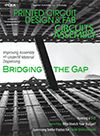-

How to Run a Design of Experiments
A review of the six fundamental steps behind scientific process development.
READ MORE... -

American Standard Circuits’ Push for UHDI is On
After new technology investments, the flagship operation of the Chicago-based fab is primed for growth.
READ MORE... -

Collaborating Across the Industry
The High Density Packaging User Group drives innovation through active partnerships.
READ MORE... -

Semi-Flexible PCBs: Flexibility without the Polyimide Price Tag
Why a relatively unknown technology might be right for static bend applications.
READ MORE... -

Embedded Sensors in Flex Circuits
From glob top to lamination, solutions for sealing parts in flex.
READ MORE...
Homepage Slideshow
How to Run a Design of Experiments
A review of the six fundamental steps behind scientific process development.
American Standard Circuits’ Push for UHDI is On
After new technology investments, the flagship operation of the Chicago-based fab is primed for growth.
Collaborating Across the Industry
The High Density Packaging User Group drives innovation through active partnerships.
Semi-Flexible PCBs: Flexibility without the Polyimide Price Tag
Why a relatively unknown technology might be right for static bend applications.
Embedded Sensors in Flex Circuits
From glob top to lamination, solutions for sealing parts in flex.







